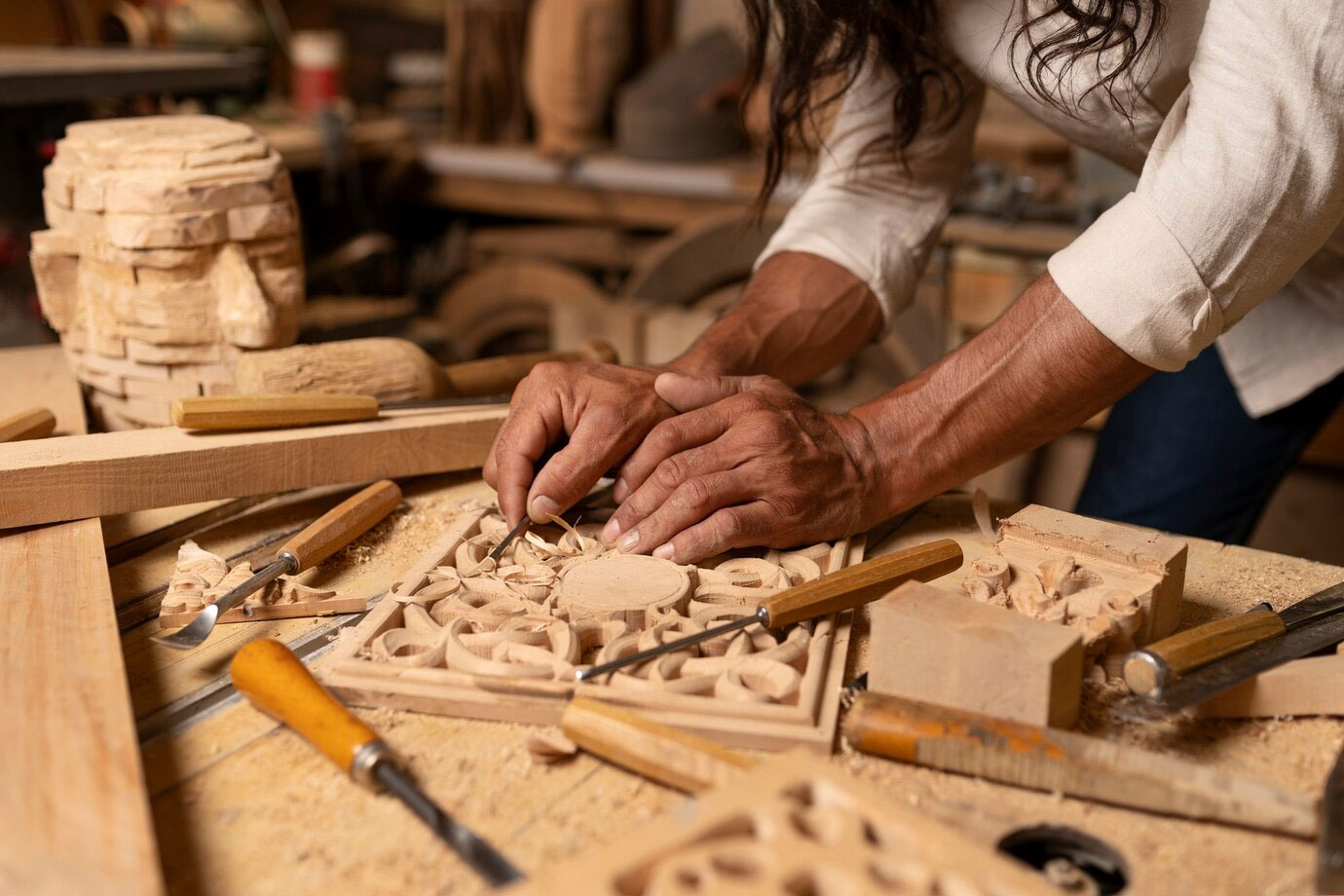Woodworking is a craft that has evolved over centuries, combining skill, creativity, and the use of tools to shape wood into desired forms and structures. Whether you’re a beginner looking to set up your first workshop or a seasoned craftsman checking your essentials, knowing about the basic tools of woodworking is fundamental. This guide will help you understand the essential tools needed to embark on your woodworking journey.
**1. Measuring and Marking Tools:** Precision is crucial in woodworking, and it begins with proper measuring and marking. Key tools include:
– **Tape Measure:** A retractable tape measure is used to measure lengths and dimensions of wood.
– **Ruler and Square:** For precision, a combination square can help you ensure your cuts are perfectly perpendicular, while a ruler is essential for smaller, more precise measurements.
– **Marking Gauge:** This tool is used to mark out precise measurements before cutting.
– **Carpenter’s Pencil or Marking Knife:** These are used for marking cuts. A pencil offers removable marks, whereas a marking knife provides a more permanent guide.
**2. Cutting Tools:** Cutting tools are vital for shaping wood. Here are the basic ones every woodworker should have:
– **Hand Saw:** A good-quality hand saw can make cuts with precision and is perfect for those without access to power tools.
– **Circular Saw:** For larger projects or straight cuts, a circular saw is indispensable. It’s versatile and can be used with different types of blades depending on the cut required.
– **Jigsaw:** Ideal for cutting curves and complex shapes in wood. With the right blade, a jigsaw can cut through different thicknesses and types of wood.
– **Chisels:** Needed for detailed handwork, chisels are used to clean out cuts and corners, trim parts, and fit joints.
**3. Sanding Tools:** Sanding is essential for a smooth finish. Basic sanding tools include:
– **Sanding Block:** A simple block that holds sandpaper and allows for more even sanding pressure.
– **Orbital Sander:** An electric sander that helps in achieving a fine finish quickly on flat surfaces. It moves sandpaper in a random orbit and is less likely to leave sanding marks.
**4. Fastening and Assembly Tools:** Once pieces are cut and shaped, they need to be assembled. Essential tools for this task include:
– **Hammer:** Used for driving nails and other fastening tasks.
– **Screwdrivers:** Necessary for driving screws; having a set with various sizes and head types (Phillips, flat-head) is beneficial.
– **Wood Glue:** For most woodworking projects, wood glue provides strong, reliable bonds.
– **Clamps:** These are indispensable for holding pieces together while glue dries or when securing wood for cutting or sanding.
**5. Drilling and Boring Tools:** For making holes in wood, these tools are essential:
– **Power Drill:** A versatile tool that can drill holes and drive screws. It can be used with various bits to accommodate different sizes and types of holes.
– **Bradawl:** For starting screws, a bradawl is handy to make small puncture points that guide screws.
**6. Workbench and Vise:** A sturdy workbench is perhaps the most crucial element of any woodworking shop. It provides a stable area to work on projects. A vise is an essential addition to the workbench, holding wood securely in place during cutting, sanding, or joining.
**7. Safety Gear:** Safety must always come first in woodworking. Basic safety gear includes:
– **Safety Glasses:** To protect your eyes from flying wood chips and dust.
– **Ear Protection:** Power tools can be loud, and prolonged exposure can damage hearing.
– **Dust Mask or Respirator:** To prevent inhalation of sawdust, which can be harmful over time.
These basic tools form the backbone of any woodworking workshop and will equip you to handle a wide range of projects. As your skills grow, so too can your collection of tools, allowing for more complex and creative woodworking endeavors. Remember, the best tools are those that fit your projects and style of working, ensuring that woodworking remains a productive and enjoyable experience.

Leave a Reply